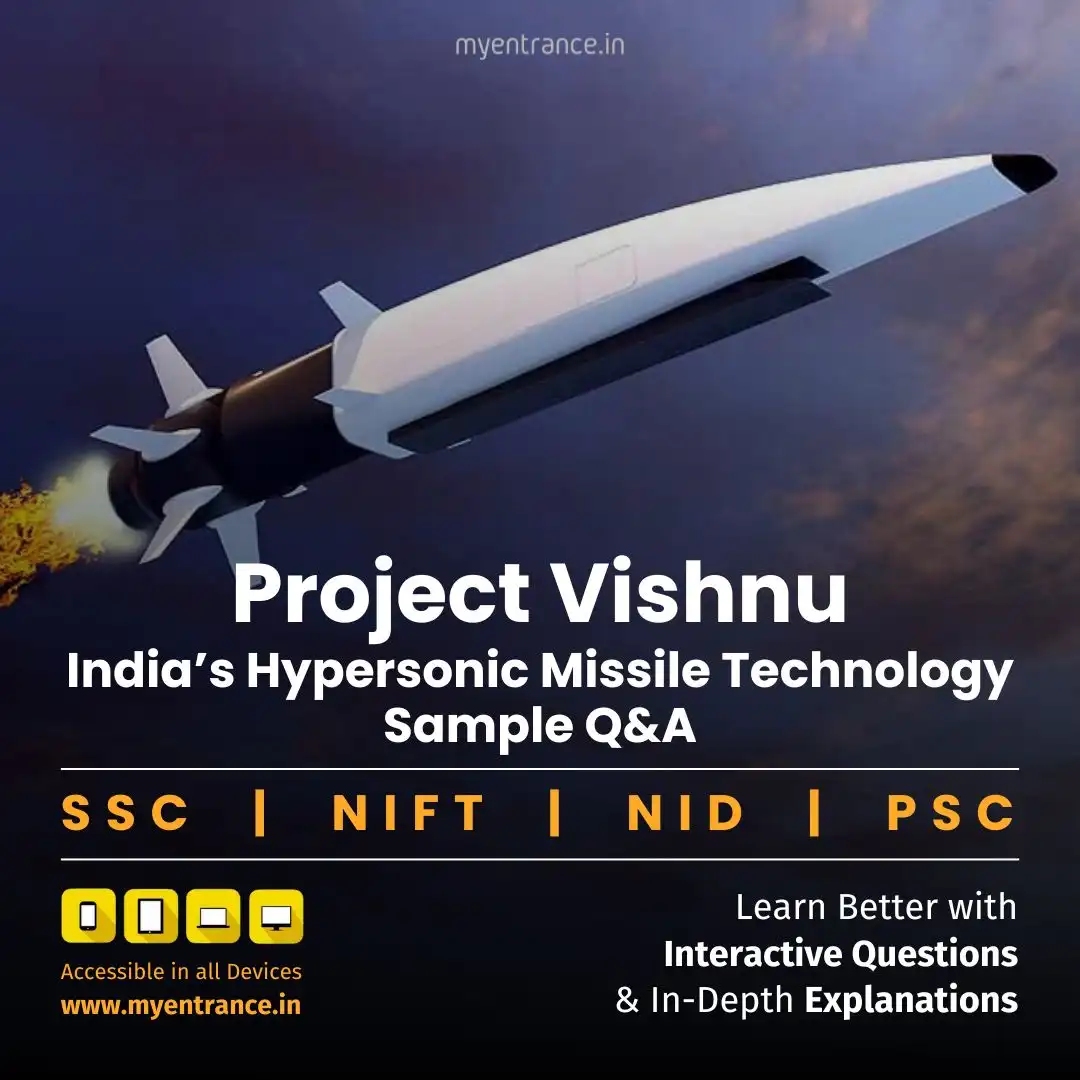Select Language
Project Vishnu: India Joins Elite Club with Indigenous Hypersonic Missile Technology: Sample Q&A
India is set to test its most advanced hypersonic missile, the Extended Trajectory-Long Duration Hypersonic Cruise Missile (ET-LDHCM), under the secretive ‘Project Vishnu’. With a staggering speed of Mach 8 (11,000 km/h) and a range of 1,500 km, this missile strengthens India’s defense capabilities, placing it among elite nations like the US, Russia, and China in hypersonic technology.
Key Features of India’s ET-LDHCM Hypersonic Missile
1. Unmatched Speed and Precision
Travels at 8 times the speed of sound (Mach 8, ~11,000 km/h).
Covers 3 km in just one second, making interception nearly impossible.
Can strike deep into enemy territories (China, Pakistan) within minutes.
2. Advanced Propulsion & Range
Powered by a scramjet engine, which uses atmospheric oxygen for combustion.
Successfully tested for 1,000 seconds in ground trials.
1,500 km operational range with 1,000–2,000 kg warhead capacity (nuclear or conventional).
3. Stealth and Maneuverability
Flies at low altitudes, avoiding radar detection.
Mid-flight course correction capability for precision strikes.
Heat-resistant materials withstand 2,000°C temperatures during flight.
4. Multi-Platform Launch Capability
Can be launched from land, air, or sea, offering strategic flexibility.
Ideal for destroying naval ships, bunkers, missile silos, and command centers.
5. Geopolitical Significance
Joins an elite group (US, Russia, China) with operational hypersonic missiles.
Strengthens India’s deterrence against China and Pakistan.
Boosts indigenous defense manufacturing under ‘Make in India’.
Why the ET-LDHCM is a Strategic Game-Changer?
Near-Unstoppable: Current air defense systems cannot intercept Mach 8 missiles.
Rapid Response: Can hit targets before enemies detect the threat.
Dual-Capability: Can carry both nuclear and conventional payloads.
Indigenous Development: Reduces dependency on foreign defense imports.
Beyond Military Use: Hypersonic Tech for Civilian Applications
Potential applications in satellite launches, aerospace research, and disaster response.
Will create thousands of jobs in defense and allied industries.
Boosts MSME participation in India’s defense ecosystem.
Sample Questions & Answers (FAQs)
1. What is the speed of India’s ET-LDHCM missile?
✅ The missile travels at Mach 8 (~11,000 km/h), covering 3 km per second.
2. Can current defense systems intercept the ET-LDHCM?
✅ No, existing radar and anti-missile systems cannot track or intercept hypersonic missiles effectively.
3. What is the range of India’s hypersonic missile?
✅ It has a 1,500 km range, capable of striking deep into enemy territory.
4. Which countries have hypersonic missile technology?
✅ Only USA, Russia, China, and now India have successfully developed hypersonic missiles.
5. How does the scramjet engine work?
✅ Unlike traditional rockets, the scramjet uses atmospheric oxygen for combustion, making it lighter and more efficient for sustained hypersonic flight.
Most Predicted Questions
Comprehensive study materials, Expert-guided tips & tricks, Mock tests and instant results.
Start your SSC, NIFT, NID, FDDI, PSC journey today with MyEntrance, your ultimate online coaching platform.








